Can Trains Move Without Tracks or Rails? Looking at the Function of the Rail and How Trains Are Moved Outside the Rails
When I was riding a train to work, I wondered what would happen if the trains ran without their tracks. Thus, I started researching why trains have tracks and what it is for. After my research, I learned a lot of exciting things that I would want to share through this post.
Theoretically speaking, trains can move without tracks or rails. However, common roads and surfaces wouldn’t be able to handle the weight of the train and its steel wheels which would cause them to sink. This is why most trains wouldn’t move off the rail.
This post will discuss train tracks and why trains can theoretically run off rails but aren’t able to do in our current technology, the purpose of the rails, and how people transport trains if they can’t move without tracks.
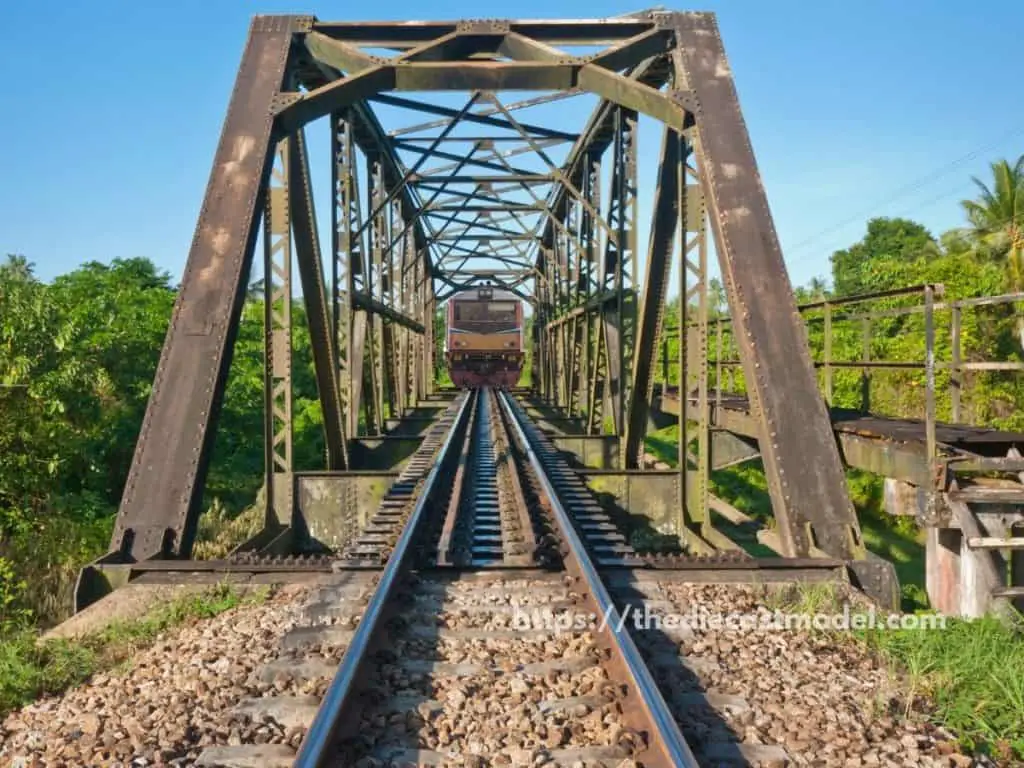
Can a train run off rails?
Trains can run off the rails provided that the road and their wheels are modified to handle the train’s weight. Unfortunately, common road surfaces and train wheels aren’t strong enough to handle the train’s weight which would cause it to sink instead of moving.
It might be fun to imagine a train running on our highways without rails, but our current technology doesn’t allow it.
Theoretically, trains can move without rails as their engines can cause their wheels to move even without the tracks. However, this can’t be done in real-life situations.
Trains can’t move on the road because their weight is too much for the road to handle. Generally speaking, trains weigh about 3,000 to 18,000 tons, depending on their load. Cement and asphalt couldn’t hold this much weight and would only cause the train to sink.
That’s why trains run on steel rails. These tracks are strong enough to handle this much weight.
Another problem is that the train’s wheels aren’t made for running outside the tracks. Trains have flanges that would instantly break if used outside the rails.
Here is a picture of the train’s flange.
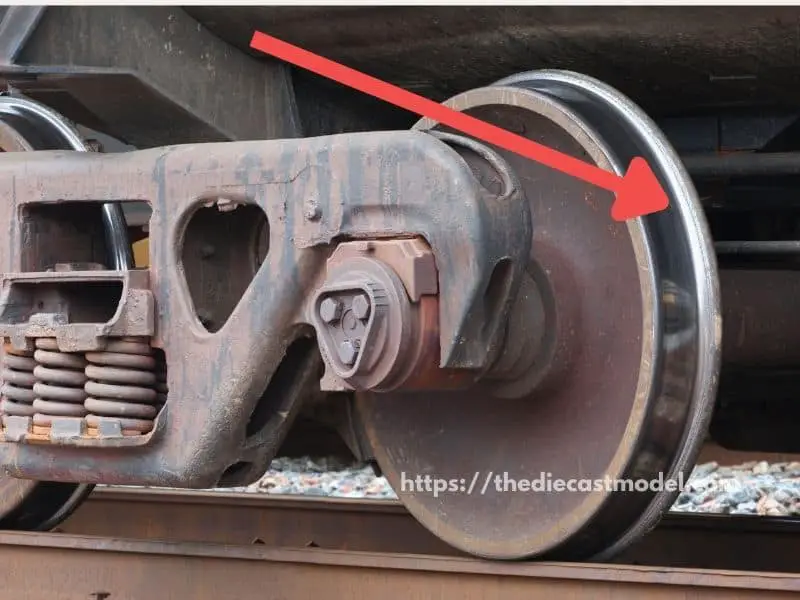
As you can see, trains have a flange that is a projecting thin rim. The flange’s job is to help the train stay on the track.
Notice that the flange isn’t built to hit the ground. Its only purpose is to help the train stay on track. That’s why if trains are used on roads, the flanges will hit the ground, which would cause them to break.
Remember that flanges are thin rims and couldn’t handle a train’s weight.
That’s why, while trains can theoretically move outside the tracks, our current technology could make it possible.
To make a train run outside the tracks, we need to have a road built with strong materials that can handle a weight of up to 20,000 tons. Furthermore, we must modify the train’s wheels to run on these surfaces.
When these two are achieved, we will be able to see trains running on the roads.
However, there are still limitations to this idea which we will talk about in the next section as we discuss the function of the rail.
Why do trains run on rails?
Trains run on rails because the rail acts to control the train’s movement and carry its load. Common roads couldn’t handle the train’s weight and would break if something as heavy as a train was placed. Furthermore, controlling all train car’s movement is impossible without the rails. Thus, train tracks are essential for trains.
Trains need rails to move. One reason is that its weight is too much for common roads to handle.
That’s why rails are made with high quality and durable steel. This design makes it possible for trains to carry thousands of tons of cargo load.
A common misconception is that maglev trains can run without rails since it doesn’t have wheels. This is not true.
While maglev trains run without wheels, they have magnetic rails that help the train levitate and move. Thus, even maglev trains need rails to move.
The rail is essential. That’s why all trains would run on these tracks.
However, that is not the whole purpose of the tracks.
The tracks help control the train’s movement.
If you notice cargo trucks, you will notice that most of them would only have 1 or 2 cargo loads.
People think that cargo trucks only have a few cargo loads because their engines can’t handle more. However, that’s incorrect.
The truth is, controlling a truck with four cargo loads is extremely difficult for the driver. While the truck can handle that much load, it is hard for the driver to control a long truck, especially on turns.
Now, imagine that trains can have 50 cargo loads. If it is a passenger train, it can have multiple passenger cars.
This burden is removed by using a track. Tracks help the train stay on track. Without it, it would be impossible to have trains with ten or more cargo loads in a single trip.
While we can upgrade the wheels and the road for the train to run on roads, running them without the tracks is hard simply because it will be nearly impossible to control them.
Furthermore, trains aren’t like cars where you can instantly turn the wheels when you want to turn. Instead, the tracks help the train turn, unlike cars.
Thus, if you put a train on the road, it wouldn’t turn and would only move forward.
So, now that you know that trains can’t move without the rails, you might start asking how these trains are transported? Well, I also thought of the same problem, so I discussed that in the next section.
How are trains transported without rails?
Trains are transported either by assembling them on-site, by large trucks, ships, or helicopters. Each of these methods has its advantages and disadvantages depending on the customer’s preference.
| Advantage | Disadvantage | |
| Assembled On-site | Easy transport and doesn’t require a lot of heavy machinery | It needs a lot of manual labor when assembling It takes time to assemble. |
| Transferred by Trucks | Delivers the train as it is without the need for assembly | Requires specialized truck to accomplish |
| Transported by Ships | Easy to Transport | It can’t be used on land |
| Transported by Helicopters | Can transport the trains fast | It can’t be used on large trains. Expensive |
1. Assembled on-site
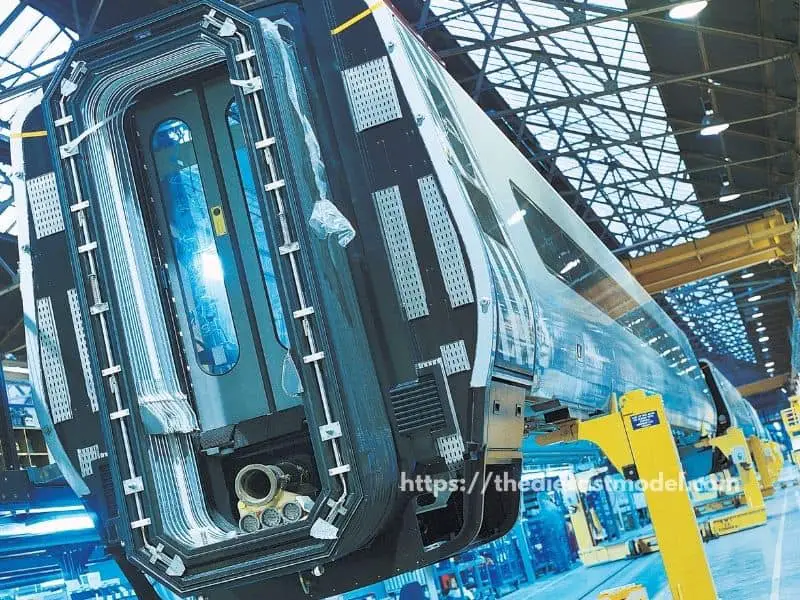
Assembling on site is the most common way of transporting trains.
Remember that trains weigh a lot and aren’t easy to transport. That’s why some prefer delivering its parts and assembling them on-site.
The advantage of assembling on-site is it doesn’t require heavy machinery to transport these trains. However, its disadvantage is that it requires many workforces to build the train on site.
Thus, the second option is the better option for those who don’t have enough workforce to assemble the trains.
2. Transferred by Trucks
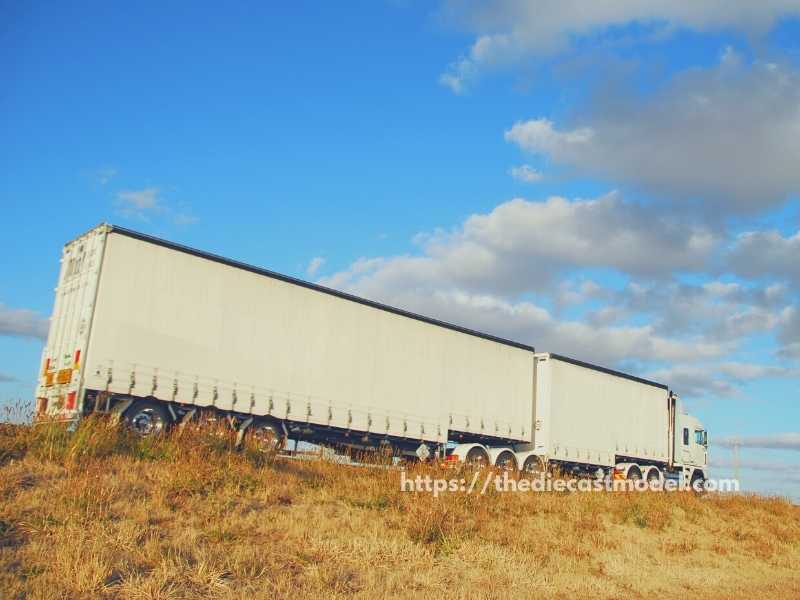
Trucks are a great way to transfer trains. However, transferring trains need specific trucks such as the ones offered by Tutt Bryant.
Its advantage is that it can deliver the train as it is, but it needs a massive truck with numerous wheels to deliver the train.
Remember that trains weigh a lot, and using a normal truck wouldn’t work. The truck needs to be strong enough to transport the train, while it also needs many wheels to balance the force applied to the road.
These two methods are the most common ones. The next ones are also good options.
3. Transported by Ships
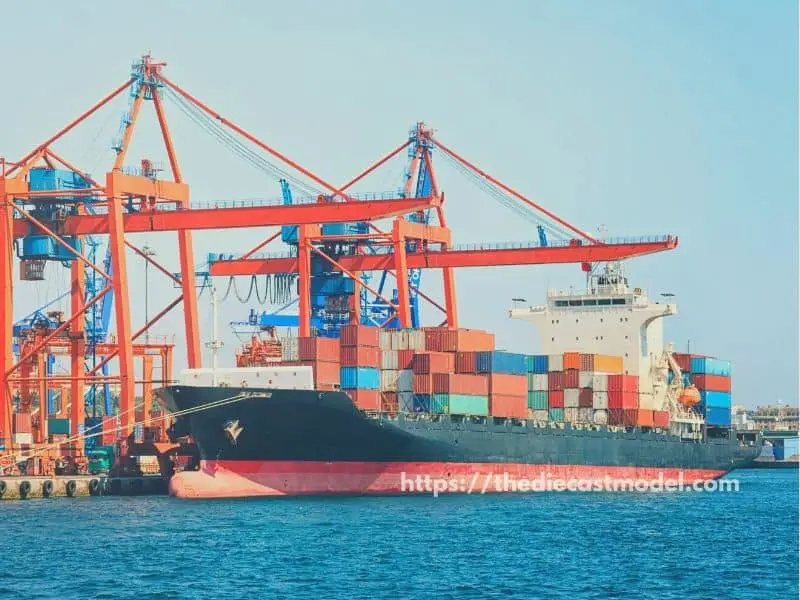
Ships are a great way to transport trains overseas, and then they use other means such as trucks to transport the train to its place of delivery.
Unlike other options, almost all large ships can carry trains. However, ships can’t be used on land.
4. Transported by Helicopters
Among the choices, Helicopters are the last choice for transferring trains.
While they provide speed and can easily cross mountains, Helicopters are costly to use.
Furthermore, Helicopters aren’t an option for some locomotives since they are too heavy for Helicopters to lift.
Thus, this is the least preferred option on the list.
What’s next? Now that you know the function of rails, have you ever wondered why tracks are always placed on flat surfaces such as plains? Can trains run uphill? We discussed that topic in this post: Can Model Trains Go Uphill?







